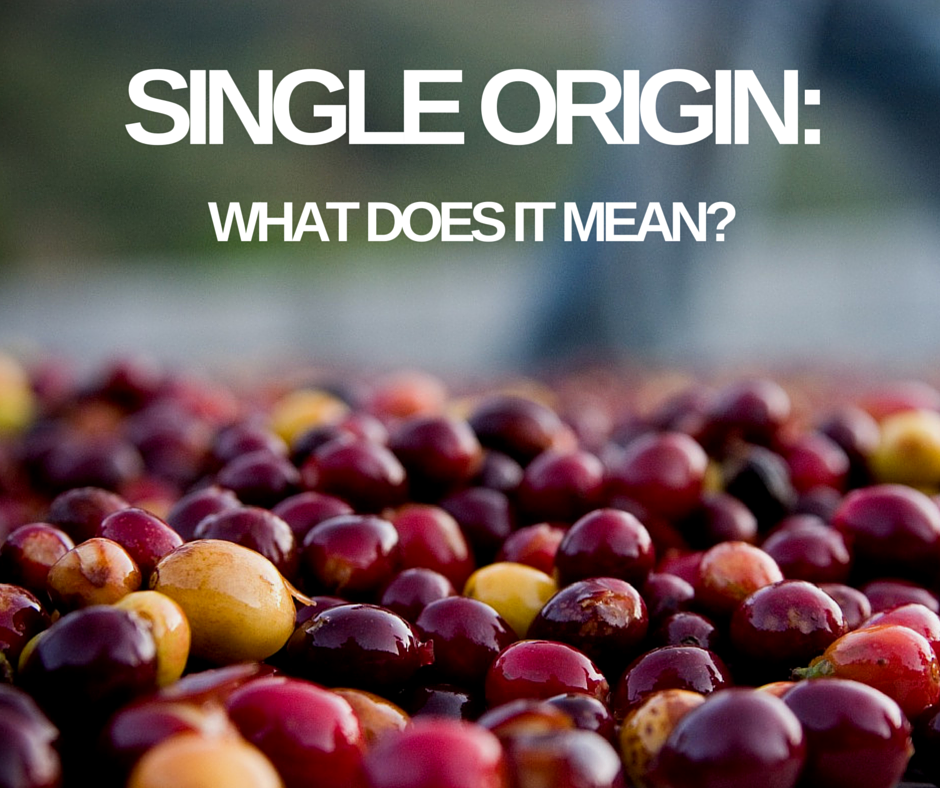Single origin coffees have been appearing on shelves everywhere, but not everyone knows what the significance behind the label is. Understanding what “Single Origin” means can actually help you appreciate your coffee a lot more, so we’ve tried to explain for you what makes single origin coffee so special.
The concept of single origin coffee has been around for quite a while, but few understand what exactly a single origin coffee is. Part of this may be because ‘single origin’ can be defined in more ways than one, some definitions more specific than others. We can commonly define a single origin coffee as one that is grown within a single known geographical location. The beans may be the product of a single farm or a collection from a single country. It may seem like a minuscule distinction to make, but factors including soil acidity and mineral levels, type of fertilizer used, and the timing of harvest can all affect the way a coffee tastes.
So how specific does the origin of a coffee have to be in order to truly be a single origin coffee? A newer label, single origin blend, refers to a blend of coffee beans from different farms within a geographic region. Whether or not this “counts” as single origin is up for debate. A more precise definition of a single origin coffee is a selection of beans from a single coffee farm that uses one processing method and one roasting method. This definition gets very specific with its requirements, aiming to highlight the coffee of the region as much as possible.
If you were to peruse through several brands’ offerings of single origin coffees, you would find a wide spectrum of definitions on both their packaging and websites. TOMS has taken a less specific approach, naming their coffees after countries like Peru and Guatemala, meaning the beans could come from anywhere in that region. Contrast this to Counter Culture Coffee, who pays homage to the very farms where their single origins are harvested. Which definition you choose to accept is entirely based upon what you prefer in your coffee.
The best way to really narrow down the essence of a single origin coffee is to stack it up against a blend. Blends combine the flavor aspects of several beans, which is ideal for creating a coffee that appeals to a wide range of customers. A blend will take the favorable qualities of a few different beans to create a complex flavor experience. Single origins allow the roaster to get a specific taste; the unique flavors will reflect the origin of the beans. One of the upsides of a single origin coffee is that it allows the drinker to notice the more subtle differences in flavors of coffees from different regions. For some, single origin coffees are a way to experience the regional flavors of places they would never have the opportunity to visit.
For those interested in trying single origin coffees, here are some of the general tasting notes by location:
- Central America: Brown sugar, cocoa, and spice; balanced and smooth
- South America: Sweet and medium-bodied
- Brazil: Chocolate with some spice
- Africa: Full flavor and bold aroma
- Middle East: Sweeter, with fruity undertones
- Kenya: Bright, juicy, sweet, tart, and tropical
- Ethiopia: If naturally processed– sweet berry; If washed– jasmine and lemongrass
- Sumatra: One of the most distinct and identifiable origins- rich, earthy, full-bodied
- Indonesia: Smoky and toasted
Be sure to shop all of our single origin coffees here!
Questions?
Ask our expert at get@apex.coffee or subscribe to the blog for more coffee stories!

